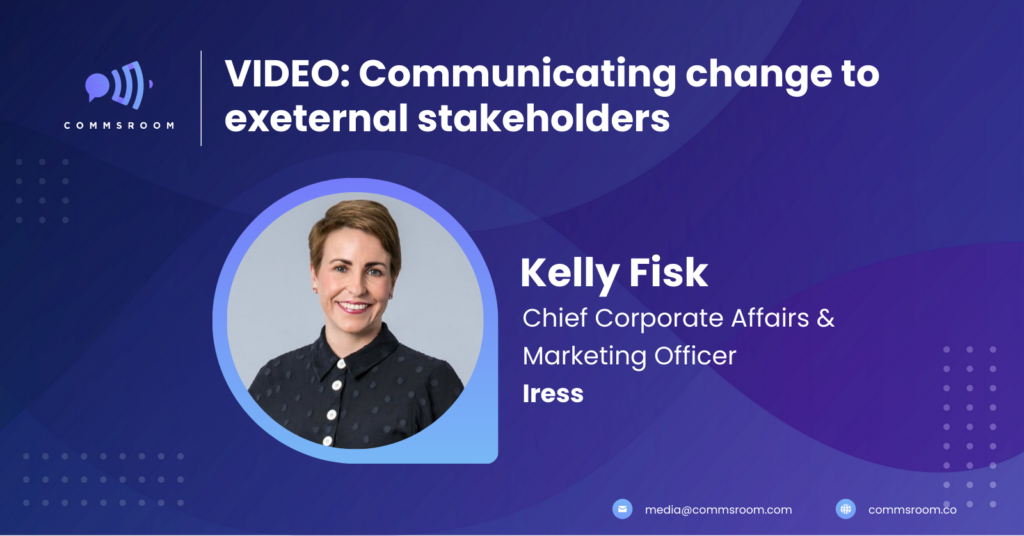- Have any questions?
- 02 7200 2179
- media@commsroom.co
- Have any questions?
- 02 7200 2179
- media@commsroom.co

Communicating change with external stakeholders, especially during times of crisis, is no walk in the park. It requires a strategic and thoughtful approach to ensure that the message is clear, consistent, and well-received.
In this recorded session, Kelly Fisk of Iress provides a blueprint on communicating change to external stakeholders. As a seasoned corporate communicator with decades of experience under her belt, Kelly is well-informed and is a seasoned veteran when it comes to communicating change.
“I spend a lot of my time thinking about how to communicate to external stakeholders,” Kelly said.
To open the session, Kelly talks about why rushing to communicate is not the best approach especially during a crisis situation. To illustrate her point, Kelly harkens us all to a few years ago during the early days of the COVID-19 pandemic.
During those times, former Prime Minister Scott Morrison would hold late night press conferences, often immediately after spending a whole day with his cabinet hammering policy after policy in hopes of containing the virus.
“He was tired, often a little bit sweaty from sitting in that conference room all day. And you could see the toll that the situation had taken on him. The detail often hadn’t been full thought through, what was announced often conflicted with what other experts were saying –anyone from ABC’s Normal Swan to other state chief medical officers.”
“And so, it was pretty easy for journalists to pick holes in the logic. And those of us who were sitting in the couch were tweeting and texting and going ‘what is going on?’ So, it’s a bit of an example of how not to communicate change in many ways.”
This continued until eventually the former prime minister’s team realized there was no need to rush through the announcement process.
“And from that moment, things felt much calmer and smoother and more logical. Everyone had a good night’s sleep. People had the chance to review all the materials and make sure that they were consistent and made sense.”
Because his internal team had the chance to internalise and review their material, they had no trouble answering questions and supporting policy pronouncements.
In this video, learn about:
Get exclusive access to Kelly Fisk’s session by filling the form below.